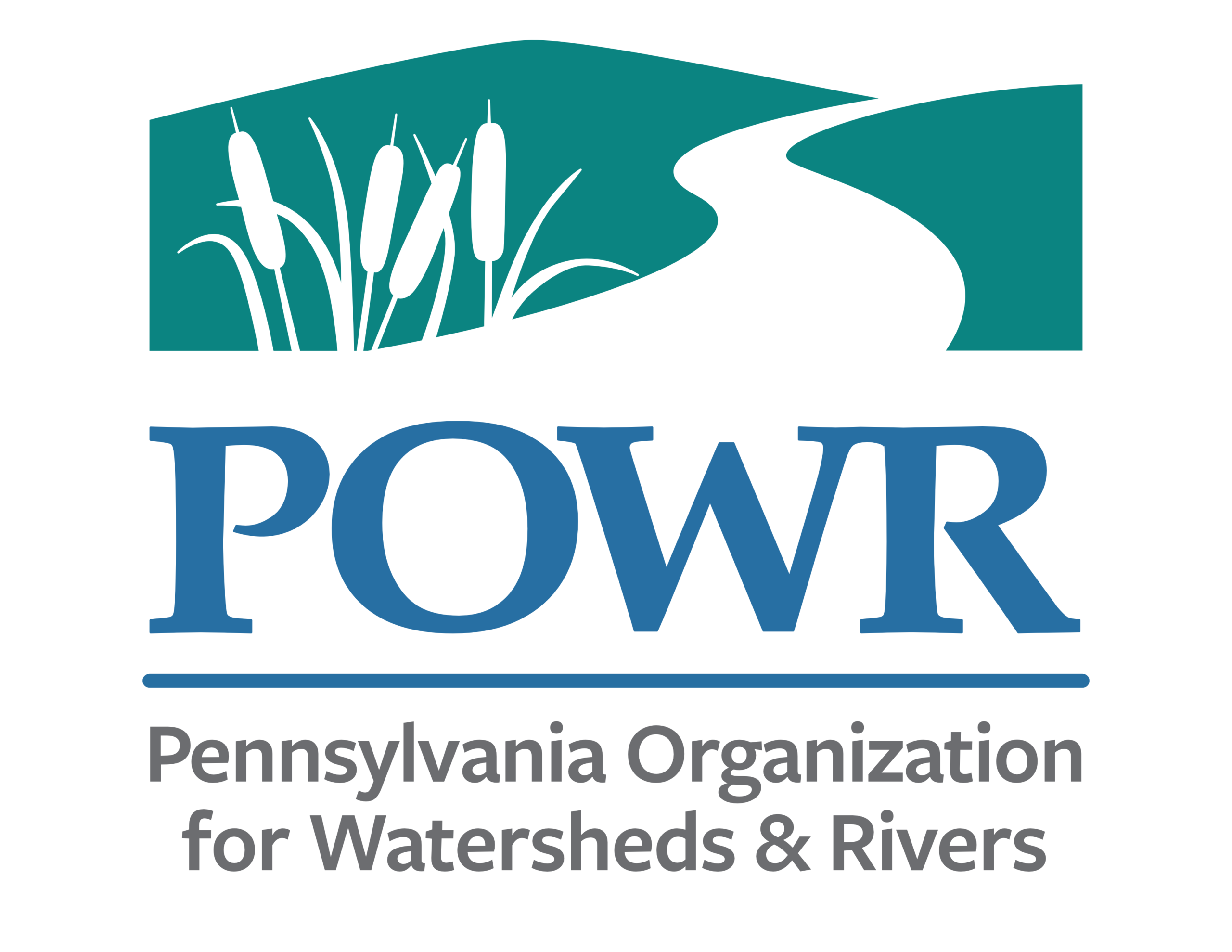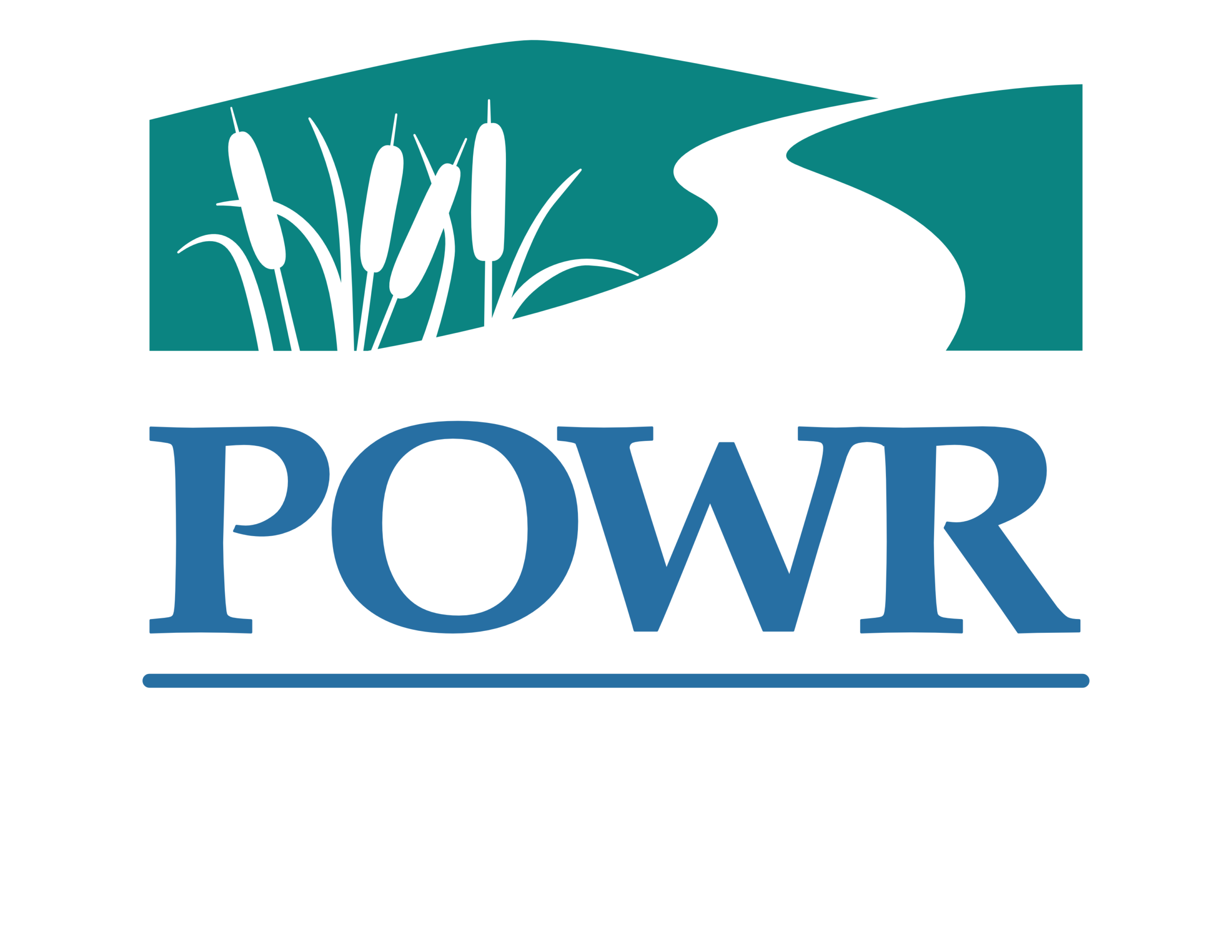Tools and Resources for Watershed Organizations
Click ‘+’ to expand resources. Click ‘-‘ to close resources.
Featured Tools
The 2023 Survey is UPDATED, REVISED, and EASIER to complete. Check it out HERE.
POWR has created an interactive GIS-based map of Pennsylvania’s known community watershed organizations (CWOs), watershed alliances and coalitions, and other organizations whose missions include water resource conservation, restoration, and education. We believe the potential applications of this tool include the ability to connect CWOs with potential regional partners for small- and large-scale restoration projects; identification of volunteer opportunities with local CWOs for interested local residents; and the evaluation of potential new strategic alliances and as well as the location of ‘gaps’ on the landscape where efforts to engage new organizations may benefit regional water resource protection efforts.
View the Map and please email POWR (tmacarthur@pecpa.org) if you do not see your CWO mapped or if the service area identified for your organization does match your actual area of impact and effort in the landscape. If you have additional corrections or questions, please contact us with those as well.
A few tips for using the map:
Zooming: Zoom in and out via either your mouse wheel or by clicking the + and – icons on the left of the map screen.
Toggle between basemaps: Users can change the basemap via the icon that is just below the zoom buttons.
Layers: You can turn layers on and off in the “Legend” tab to the left of the map.
Selecting features: When you click on an area of the map, any watershed organizations or other “features” in that area will become highlighted in blue. The information about the selected feature is displayed on the left panel of the map under the “Info” tab. If the location you clicked contains more than one feature (note: layers must be on to be selectable), you can toggle between them using the arrows at the top right of the “Info” tab.
Search Function: Users can search for features in various layers, as well as locations, via the magnifying glass icon in the top right of the map. The drop down menu at the left of the search bar allows user to select which layer is being searched. Only one can be selected, or select “all.”
Please note that this map is a work in progress and we are still quality checking information, working on making it more user-friendly and adding more information.
Current Funding Opportunities
The Western PA Conservancy is now accepting applications for Watershed Mini Grants from organizations in Western Pennsylvania. The deadline for application is October 1.
Funding for this grant program is provided by BHE GT&S, a subsidiary of Berkshire Hathaway Energy.
The program offers funding to watershed organizations in the following counties: Allegheny, Armstrong, Beaver, Blair, Bradford, Butler, Cambria, Cameron, Centre, Clarion, Clearfield, Clinton, Crawford, Elk, Fayette, Franklin, Greene, Indiana, Jefferson, Juniata, Lawrence, McKean, Mercer, Potter, Tioga, Venango, Washington and Westmoreland.
Watershed Mini Grants can be used to cover expenses in three areas—
— Water Quality Monitoring ($3,500 limit)
— Restoration Projects ($3,500 limit)
— Organizational Promotion and Outreach ($2,500 limit)
Click Here for all the details. Questions should be directed to Kelly Horrell, khorrell@paconserve.org or 724-471-7202, ext. 5100.
The PA Water Trails Mini Grant Program grants can be used to support projects on designated PA Water Trails that improve access to these recreational treasures.
- Mini grants are available up to $5,000 with a 1:1 match. Match can be cash of in-kind, but it must follow DCNR guidelines and, in most circumstances, cannot be DCNR funds from another grant program.
- Projects should be implementable within one calendar year (by August 2022).
- Eligible projects are ones that improve access on designated PA Water Trails.
- Access can be physical or “psychological.” That means that new boat ramps, camp sites, bathrooms, and ADA-accessible docks are eligible, as well as updated maps and signs, creative programming, redesigned websites, and other projects that increase awareness or welcome new users to the water trail. If you are not sure if your proposed project improves accessibility, do not hesitate to contact me to chat about it.
- Projects do not have to be implemented by the water trail’s management organization, however, they do have to be on a designated water trail. Here is a map of water trails and their managers.
The grant period typically opens in the spring
The Pennsylvania Lake Management Society (PALMS), with funding from the Pennsylvania Department of Environmental Protection, offers assistance to landowners, non-profits, county conservation districts and municipalities to address lake-related issues of critically eroded shorelines, excess nutrient loading, and aquatic invasive species that degrade the quality of lakes in the Commonwealth. This program offers a limited number of grants on a competitive basis, up to $24,000 each, to correct identified lake problems. Priority will is given to projects that a) propose to address watershed impairments identified in the Commonwealth’s 303(d) list and b) plan to direct at least 85% of the funds to direct implementation costs. All projects must include an educational and outreach component, some examples, but not limited to; workshops, project signage/kiosk, videos, handouts, etc.
Grant period typically opens in early summer.
Diversity, Equity, Inclusion, and Justice Tools
The Alliance for the Chesapeake Bay has released this Alliance DEIJ Terminology Guide to facilitate communication with all audiences in a way that is sensitive to DEIJ considerations. It is a general guide, subject to change and edits.
Access to many Equity, Diversity, Inclusion, and Racial Justice Resources for Nonprofits are available on this River Network webpage. They include articles, books, blogs, videos, and more.
Communication, Outreach, and Networking Tools
www.brooketully.com: Learn to design communication and outreach plans that motivate action and change for the environment. Understand why people don’t do what you really want them to do. Learn new ways to motivate them in your outreach and messaging. Watch a quick 5 min video about debunking communication tactics to motivate action.
A list of providers of communication services can be found below under the Organizational and Technical Assistance, Organizational Resources Support.
- Tips for engaging with journalists on Twitter
- Watch POWR’s webinar: Attracting Media Coverage for Your Activities
- The Juniata Watershed Alliance has worked to build a relationship with their local media. Here’s one example of how that has paid off!
One of POWR’s partners, River Network, has created an Online Community – a space where representatives from the 8,500+ nonprofits, agencies, tribal groups, and utilities who protect and restore rivers and safeguard clean water across the United States can connect and collaborate for a future with clean water and healthy rivers for all. Free and premium River Network members are encouraged to register HERE.
You can join at anytime, and you don’t have to be a River Network Member. However, the FREE membership option comes with lots of great benefits and helps show your support for their great work connecting water resource and watershed advocates.
Volunteer Recruitment, Management, and Retention
- Watch POWR’s Volunteer Motivations, Management, Recruitment, and Retention Webinar
- Sign up for Penn State Extension’s Volunteer Management & Leadership Tip Email Newsletter
- The Alliance for Aquatic Resource Monitoring : engages communities to use science as a tool to investigate the health of their streams and to use the data they generate for aquatic protection and restoration efforts.
Organizational and Technical Assistance
- National Fish and Wildlife Foundation (NFWF) Field Liaison Support: Access free technical assistance from NFWF for Chesapeake Bay-related restoration.
- Phase 3 WIP Newsletter Available from PADEP The Department of Environmental Protection Chesapeake Bay Office (CBO) produces a monthly newsletter to showcase progress and updates on the statewide Phase 3 Watershed Implementation Plan and our local partners’ Countywide Action Plans. Read the Current Newsletter and Access Archived Issues
The Three Rivers QUEST (3RQ) project monitors rivers, tributaries, and headwater streams within the Allegheny, Monongahela, and Upper Ohio River Basins. It works across state boundaries to bring together academic researchers, citizen scientists, and conservation groups to collect, analyze, and monitor important water quality data. Additionally, 3RQ manages a data warehouse called WATERS. WATERS (Watershed Assessment Tool for Education & Research Studies) is a free and easy to use platform for managing water quality data collected by any organization, regardless of geographical location. It was created to serve watershed groups as a useful tool for safely storing and retrieving data. This data is displayed via online maps to provide the public, researchers, federal and state agencies with timely and accurate information as it pertains to the overall health of our rivers and streams. 3RQ is a project of the West Virginia Water Research Institute and is housed at West Virginia University.
Water/Watershed Education and Planning Resources
This story map illustrates the effects of dams on the landscapes and water quality of Lancaster County and the Bay region. This latest education and research tool produced by the Water Science Institute Team with support from the PADEP Growing Greener program will complement and encourage extraordinary conservation and restoration initiatives on behalf of the Chesapeake Bay.
The Penn State Master Watershed Steward program educates and empowers volunteers to protect the environment by providing extensive training in watershed management and natural resource topics such as stream ecology, conservation education, stormwater management an more. In turn, participants dedicate volunteer time to projects and community education. Learn more HERE and check on the Calendar of Events listing for information sessions.
Pennsylvania American Water just came out with a 30-second video PSA reminding the public to properly dispose of FOG (Fats, Oils, and Grease) to avoid household plumbing and sewer line clogs. The video features ugly sweater-wearing characters Fats, Oil, and Grease as uninvited holiday party guests who threaten to wreak havoc on their host’s pipes.
New research as well as on-going water quality monitoring data are shedding light on the effects of road salt on PA’s streams and rivers. Learn more in a special issue of Stroud Water Research Center’s UpStream Newsletter.
Check out this informational flyer from our partners at the Tookany/Tacony-Frankford Watershed Partnership.



